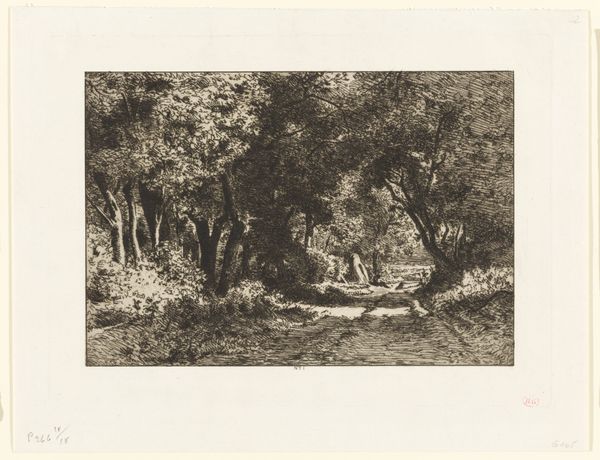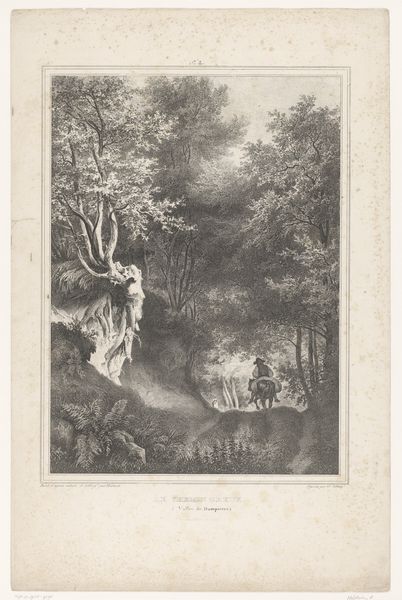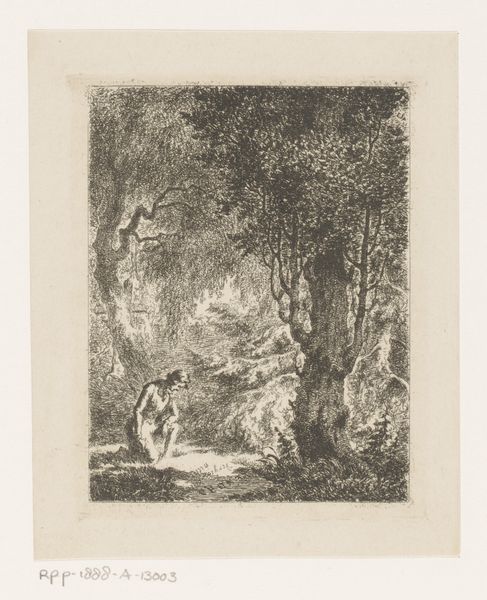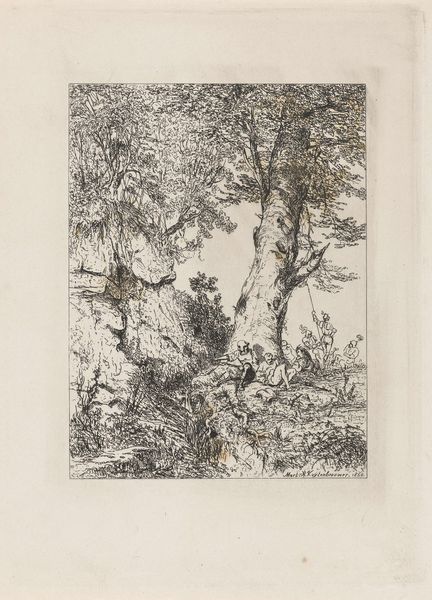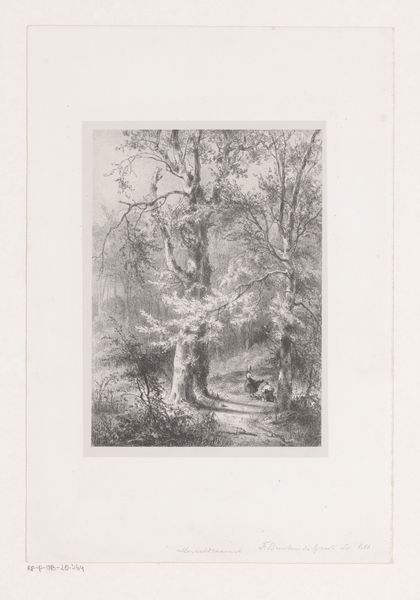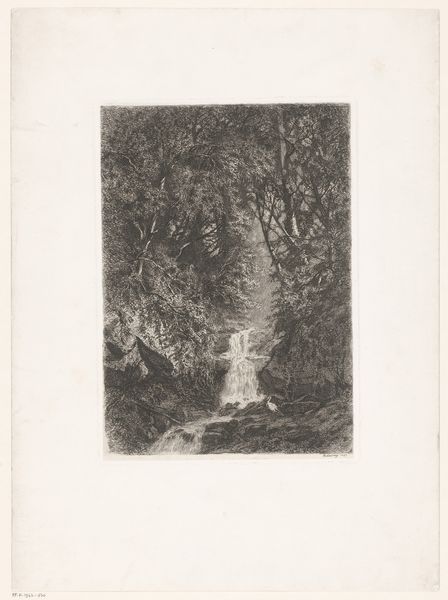
print, engraving
# print
#
landscape
#
line
#
northern-renaissance
#
engraving
Dimensions: height 234 mm, width 185 mm
Copyright: Rijks Museum: Open Domain
Curator: This delicate engraving, titled "Kruising van wegen in een bos," which translates to "Crossroads in a Forest," was created sometime between 1586 and 1630 by Isaak Major. The print employs an incredible level of detail given its medium. Editor: It feels wonderfully enclosed and intimate. Despite the density of the foliage, there is a real sense of depth. Look at how the light flickers through the canopy, illuminating different textures within the wooded scene. Curator: Engravings like this were far more than mere aesthetic objects. The process itself, etching and printing, democratized the image-making. They facilitated knowledge sharing, especially as land management practices evolved. Imagine the cultural implications! Editor: That’s fascinating, I tend to be struck by the composition. Notice the two tiny figures in the distance, almost swallowed by the grandeur of nature, creating a point of focus in an otherwise intricately patterned space. The formal structure, this opposition, is incredibly engaging. Curator: Indeed. Think about the material realities behind this artwork: the engraver, the paper, the printing process. Consider how the accessibility of prints like these enabled people to share ideas on things such as agriculture, architecture and surveying, and spread Renaissance naturalism across Europe. Editor: I'm really drawn to the almost hyperrealistic textures achieved through line alone. Consider the ways that each small mark contributes to a palpable sense of weight in those tree trunks, and compare that to how the cloud in the distance becomes visible as the simple omission of engraved lines. Curator: These prints also served a didactic purpose. The forest here becomes a symbolic landscape representing the shifting socio-economic relationships that influenced the natural world at this time. It reflects on man's interaction with—and sometimes intrusion on—nature. Editor: The engraving offers an escape, an almost meditative engagement with nature's intricacies. You know, thinking about it I am drawn now to how it serves as a sort of map that's concerned less with practical wayfinding and more interested in aesthetic possibilities. Curator: It's truly fascinating how a single artwork can reveal so much about cultural exchange, shifting artistic practices and the evolving relationship with nature itself during the Renaissance. Editor: Exactly! This tiny work showcases the ability of artistic composition and structure to render a complex understanding of both form and the surrounding world.
Comments
No comments
Be the first to comment and join the conversation on the ultimate creative platform.
